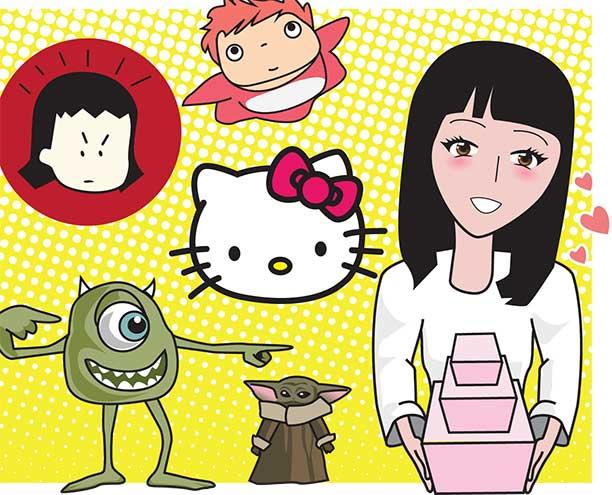A few years ago, English professor Anne Cheng ’85 was visiting a Hello Kitty store in Pittsburgh when she noticed that those around her seemed enamored with the merchandise. Again and again, she heard people describe the character as cute.
“What is cuteness?” wondered Cheng, the only Asian American customer in the store at the time. “And why is it, in America, so deeply associated with femininity, smallness, and the Japanese?”
That moment would inspire a Princeton course titled “Too Cute!: Race, Style, & Asiamania.” The class, which enrolled about 60 students in the fall semester, challenges students to develop a working definition of “cuteness” and explore its implications for larger questions of race, culture, and appearance. It also serves as an introduction to Asian American studies.
The goal is to provide students with a “deeper understanding of the kinds of values that we have as a society,” said Kimberly Bain, a graduate student who is lead preceptor for the course. The United States has a history of anti-Asian sentiment, Bain said, pointing to the 1940s, when Japanese Americans were confined to internment camps. Even today, she said, Asians are seen as cute and the “model minority.”
A student in the class, Megan Pan ’22, said that as she was growing up she thought a lot about the widespread belief that Asian culture is cute, but she never imagined it was a subject that could be studied academically. Pan, who plans to major in comparative literature, said the course has inspired her to consider pursuing a certificate in Asian American studies.
She said she’s learned that cuteness can take many forms in addition to aesthetics, and she found a lecture about ways cuteness can be used to encourage consumer purchases to be especially fascinating. “Cuteness has more resounding repercussions than it initially seemed to have,” she said.
A lecture by English professor Eduardo Cadava about Sigmund Freud’s 1919 essay “The Uncanny,” and viewing the 2001 animated film Monsters, Inc., put a different spin on the subject. “Cuteness can sometimes gloss over different forms of violence and complicity [and] can be a means of covering over a danger that is hidden within the display of cuteness,” Cadava said.
Though focused mainly through an Asian cultural lens, the class also examined other “cute” figures that rose to popularity, such as Shirley Temple, reality-TV star Honey Boo Boo, and the now-popular Baby Yoda memes.











No responses yet